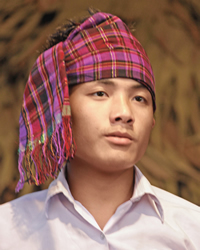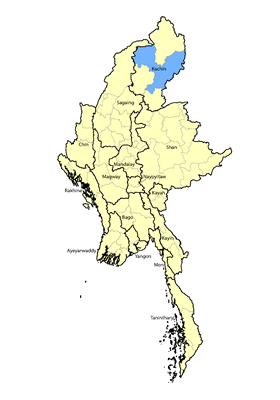Rasa in Myanmar (Burma)

Photo Source:
Asia Harvest-Operation Myanmar
|

Map Source:
Asia Harvest-Operation Myanmar
|
| People Name: | Rasa |
| Country: | Myanmar (Burma) |
| 10/40 Window: | Yes |
| Population: | 800 |
| World Population: | 800 |
| Primary Language: | Language unknown |
| Primary Religion: | Christianity |
| Christian Adherents: | 60.00 % |
| Evangelicals: | 30.00 % |
| Scripture: | Unspecified |
| Ministry Resources: | No |
| Jesus Film: | No |
| Audio Recordings: | No |
| People Cluster: | South Asia Tribal - Naga |
| Affinity Bloc: | South Asian Peoples |
| Progress Level: |
|
Identity
This profile is probably the first time in their history that the Rasa people have been profiled as a distinct ethnic group. They have been lumped together under the generic Tangshang banner in Myanmar, as the government there refuses to acknowledge each individual Tangshang tribe. The Rasa people have their own history, sense of group identity, and dialect. There are significant cultural and historical differences between the Rasa and other Tangshang tribes located along the Indian border, who historically engaged in head-hunting raids and have struggled to eke out an existence in the wild mountains.
Location: Unlike almost every other Tangshang-related group in Myanmar that is based in the Sagaing Region, the 800 members of the Rasa tribe dwell in neighboring Kachin State, specifically in and around the small town of Shinbwiyan, which is located within Tanai District. Their main village, Takhet, is home to more than 300 Rasa people in at least 40 households, while others are dispersed in towns and villages inhabited by other ethnic groups. Tanai is only 40 miles (65 km) from the border with Yunnan Province, China, whereas most other Tangshang tribes in Myanmar are located along the Indian border further west. Although, with 40 households, the Rasa make up the largest component of people in Takhet village, the community is also home to 30 households of Lungkhi people and 15 Khalak families.
Language: The only research known to have been conducted among the Rasa people was by a group of linguists in 2013. They surveyed 310 Rasa people living in Takhet village and concluded that their dialect is related to ten other Tangshang varieties, which they grouped together under the name Lungkhi. Those dialect groups, all of which have been profiled separately in Operation Myanmar, are the Gaqchan, Gaqyi, Hasa, Henching, Khalak, Kochung, Lakki, Lungkhi, Ringkhu, and Shangti.
History
The small town of Shinbwiyan formed part of the famous 1,072-mile (1,726 km) long Stilwell Road, constructed by the United States to create a supply route from India to China during World War Two to resist Japanese advances. The town, which is known as Tawa Gaq in local Tangshang dialects, had an airbase constructed there. In October 1943, the Chinese military crossed the border and a fierce fight ensued against the Japanese army, who held the town. The Chinese successfully captured the airbase and the village after five days of intense combat.
Customs
Traditionally, Tangshang tribes practiced shifting cultivation, where crops are replanted after a few years in new areas. Today, most people practice wet rice cultivation and grow vegetables, and meals often consist of boiled or roasted fish or meat. The Rasa are allowed to marry outside their tribe, although their preference is to find partners from other Tangshang groups and not from entirely different ethnicities. Divorce is rare, and the person deemed to have caused a separation is subject to various punishments and fines by the village elders.
Religion
Although details are scarce, it is believed that most Rasa people today are professing Christians, although groups in Kachin State have been more exposed to Buddhism by their proximity to the Burmese and Shan, who make up 32 and 22 percent of the state’s population, respectively. Few Rasa people still cling to the animistic rituals that were zealously practiced by their forefathers for countless generations.
Christianity
The Kachin Jingpo are the most populous ethnic group in the Rasa area. They number more than one million people nationwide, two-thirds of whom are Christians. It is thought the Kachin Jingpo evangelized and discipled the Rasa and other groups living in Tanai Township. Although they have no Scripture in their own language, which is unwritten, Rasa believers probably use Kachin or Burmese Bibles.